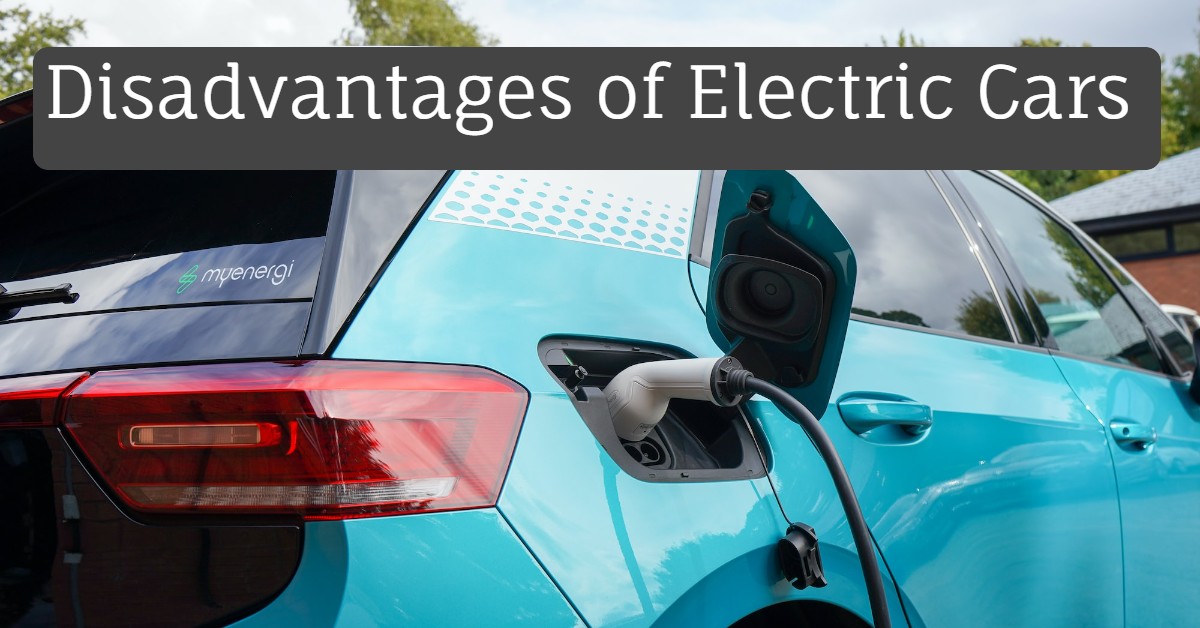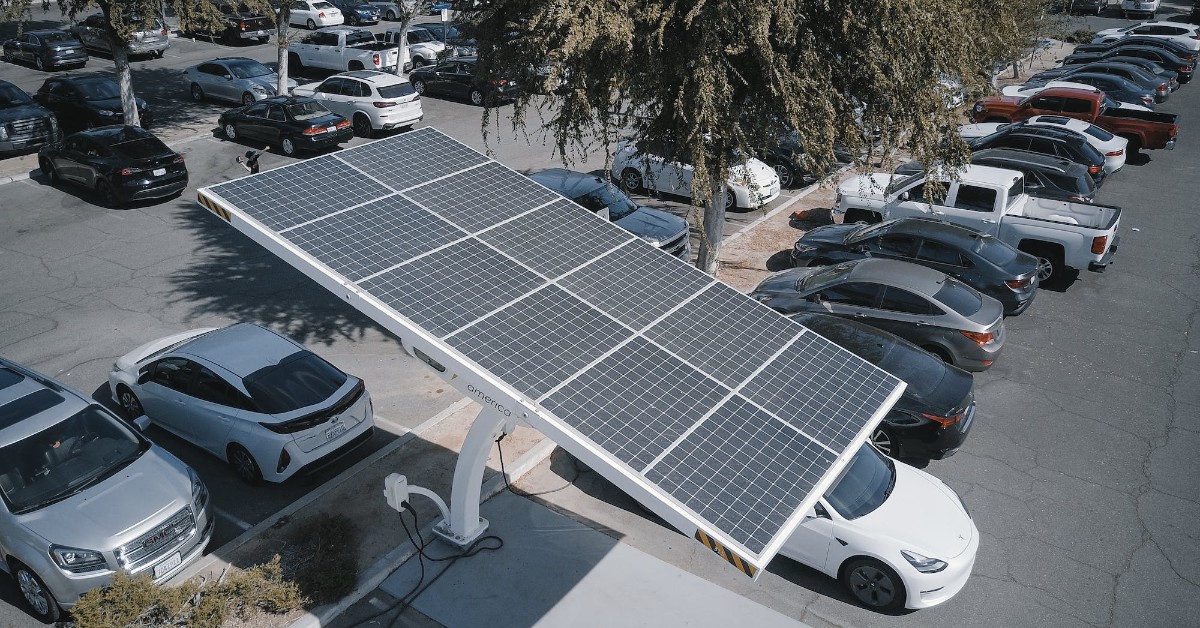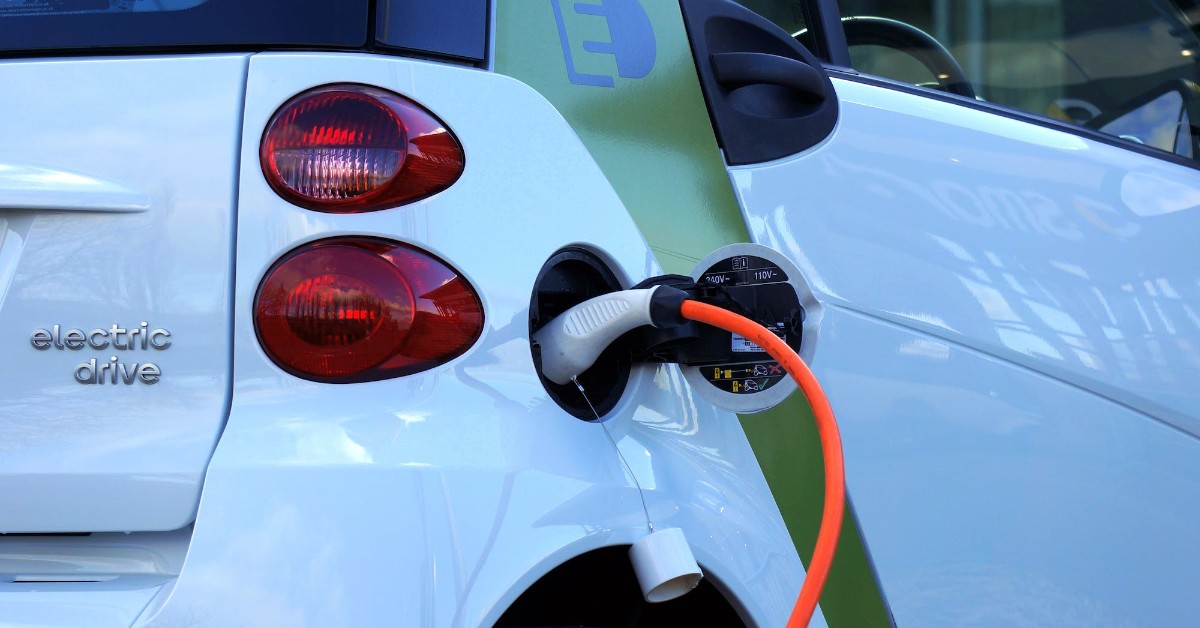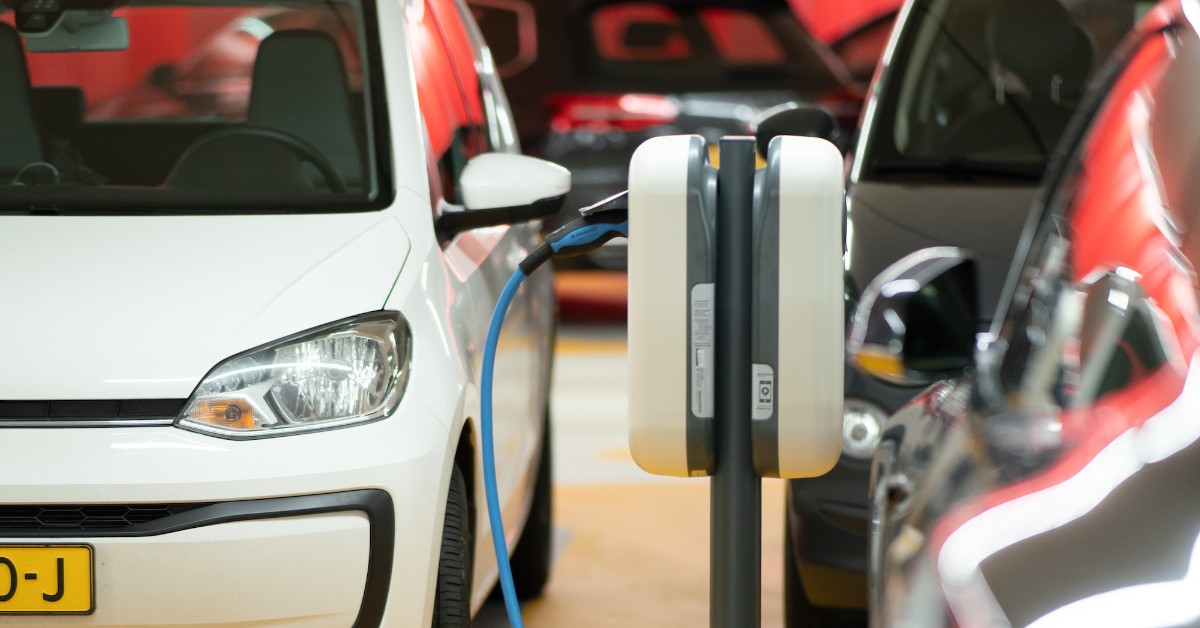Top 15 Disadvantages of Electric Cars (2025 Report)
The automobile industry’s future is electric. Every year, electric vehicles (EVs) improve and become more affordable, and an increasing number of consumers purchase electric cars.

While electric cars have gained popularity for their environmental benefits and potential cost savings, they also come with some disadvantages.
Depending on where you live, you are probably surrounded by electric cars daily. There are some significant distinctions between electric vehicles and gasoline-powered vehicles.
An electric car, often known as an electric vehicle, is a vehicle propelled by one or more electric motors. These motors are propelled by electrical energy stored in onboard batteries.
Electric vehicles are much quieter than gas-powered or internal combustion engines. They create no exhaust emissions and have far lower total emissions. They also have a lower cost of ownership, albeit this varies depending on where you are in the world.
Because they are powered by electricity, they must be plugged in to replenish the batteries. But what are the disadvantages of electric cars? Read on to find out.
Disadvantages of Electric Cars
Despite the tremendous push in this country to increase the number of electric vehicles, there are some potential downsides or disadvantages of owning and running an electric car.
Some of the disadvantages of electric cars include finding charge stations, charging times, greater starting prices, limited driving range, and battery packs that might be expensive to replace.
There is little doubt that the future is electric, and as electric car adoption rates rise and the underlying technology evolves, these drawbacks will become less and less relevant.
Let’s critically discuss the disadvantages of electric cars:
1. Finding a Charging Station
Electric car charging stations are fewer and farther between than gas stations.
For many people who charge at home every night and don’t need access to other charges regularly, this is a small consideration.
In the previous five years, there has been a fast increase in the number of charging stations across the country. According to Statista, the United States had approximately 40,000 charging stations as of February 2021. This figure will only rise as electric vehicle adoption rises.
Automakers have also made a huge push to help expedite the growth of charging stations, which should help alleviate this problem in the coming years. One notable example is GM’s recent collaboration with EVgo (the largest public fast-charging network in the US) to build more than 2,700 more stations in public locations over the next five years.

2. Long Charging Time
One advantage that gas has over electricity is the speed with which it may be refilled. It takes two to three minutes to fill up at a petrol station. It can take hours to fully charge an electric car.
The time will vary depending on the model of the car and the charger’s throughput. Newer fast chargers have higher power ratings and can charge a battery to roughly 80% in around 30 minutes.
This time should continue to reduce as technology advances. For many, this is not a worry because they drive less than the range of their electric vehicle on most days, but for those who must travel longer distances regularly, this should be taken into account.
3. The Driving Range on a Full Charge
In recent years, battery technology has extended the range of electric vehicles. It is already normal to see new electric vehicles with effective ranges of more than 200 miles. The 2021 Bolt EV has a range of 259 miles on a full charge, while the Tesla Model S has a range of 387 to 520 miles.
Gas-powered cars, on the other hand, typically have a range of roughly 400 miles per tank of petrol. If you frequently drive long distances, the range should be a factor in your purchase selection.
4. Higher Initial Purchase Cost
While it is true that electric cars are less expensive to operate than their gasoline-powered counterparts, the lower ongoing costs usually come at the expense of a greater purchase price.
The present price difference between comparable products appears to be roughly $10,000, although this gap should continue to shrink as technology advances.
Despite this, when petrol and maintenance costs are considered, EVs tend to be less expensive throughout the life of the vehicle. However, local and federal incentives and rebates are frequently available to close this buying gap.
5. Battery Replacement is Expensive
The performance of electric car batteries degrades over time. Factors such as temperature, usage patterns, and charging habits can contribute to this degradation. Eventually, the battery may need to be replaced, and this process can be expensive.
A disadvantage of electric cars is the high cost of changing the battery packs. One of the primary reasons for the greater initial cost of EVs is the batteries. A complete replacement can cost up to $6,000. However, as technology progresses, these prices are reducing.
This issue is eased by the fact that a full battery replacement is rarely required, and EVs remain less expensive to operate during their lifetime.

6. Low Top Speeds
Electric cars are rapid, and there is no lag or delay in power delivery, so everything feels entirely natural. However, unless you’re looking at the very top of the EV market, most family-friendly SUVs and hatchbacks have rather low top speeds. Some can barely reach 90mph, but a base-spec petrol automobile will easily exceed 100mph.
7. Environmental Implications
An electric car emits no pollutants; nonetheless, the technique of producing power has a direct impact on how ecologically friendly it is. The production of the lithium-ion battery pack is also more environmentally damaging than the production of a typical gasoline-powered car.
8. Their Batteries need Rare Metals
Lithium, the lightest metal and solid element under normal conditions, is used extensively in the batteries for electric vehicles.
Chile produces the most lithium (8,800 tonnes per year), followed by Argentina and China, with Bolivia having the world’s largest known reserves.
Copper, cobalt, aluminum, nickel, and sometimes manganese are also utilized in electric vehicles, as is conductive nonmetal graphite.
Rich cobalt resources exist in nations such as the Democratic Republic of the Congo, where it rests on the surface and is collected by miners, including women and children. Cobalt is poisonous to people, and the majority of these miners work with little or no protection.
It has been stated that we will struggle to produce a large number of electric cars in the US in the near future simply because we do not have enough access to supplies of lithium to construct the batteries, nor do we have the factories to make them in.
9. Temperature Affects Electric Vehicles in Bad Ways
You’ve been allowed to drive year-round since Henry Ford introduced the Model T and its pickup version, the Model TT, in 1908 and 1917, respectively. The weather may affect how effectively an ICE vehicle starts and runs, but it has little effect on fuel economy unless you prefer to sit and wait with the heater on full blast.
The same is true if you need to run to the store in the middle of summer. Granted, using the air conditioner uses a little extra petrol, but it does not drain the battery as quickly as driving an EV.
Cold, hot, and every temperature in between can all have an impact on the performance of your EV, causing the figures you expect (range or power) to fall short, and leaving you stuck somewhere.
10. Electric Cars are not Apartment-Friendly
The world is facing a significant housing crisis, which is not necessarily due to the growing population (save in a few nations), but rather to countries’ inflation exceeding the cost of living. To help offset this, countries such as the United States are pushing for additional apartment complexes to be built, either affordable or state-supported, giving individuals who might otherwise be homeless access to housing.
The issue with this housing solution is that few flats will have exterior outlets capable of charging an electric vehicle, let alone the capability and space to install a fast charging station to help speed up the process.
11. Towing is possible with Electric Vehicles, but it is more expensive than with ICE versions
When towing with an ICE vehicle, unless you’re driving a heavy-duty truck or a pickup built for the job, you know the fuel efficiency will suffer. The heavier the load, the less mileage the vehicle will get on a full tank of gas.
The same thing will happen if you drive an electric version, but instead of stopping for a fill-up anywhere along the way, you will have to figure out how to get a full charge to continue.
The standard range of the Ford Lightning, for example, is 240 miles. When towing, it lowers to roughly 100 miles, which is hardly enough distance between cities in rural sections of the country.
12. Electricity Costs and Worldwide Supply Issues
One aspect of owning an electric vehicle that many people forget is the amount of power required to charge it. Almost every night, the electric vehicle will have to be plugged into an outlet that will draw more energy from the power system (unless you have your own grid powered by renewable resources like solar electricity).
Rolling blackouts have occurred in some parts of the world for various causes, leaving homes without electricity and cars without a way to charge for the day. So, while EVs lower carbon emissions, they consume more electricity from already stressed power systems throughout the world.
13. Limited Model Variety
While the variety of electric car models is growing, the market still has fewer options compared to traditional vehicles. Some consumers may find it challenging to find an electric vehicle that meets their specific needs in terms of size, features, or performance.
14. Weight and Performance Trade-offs
The heavyweight of electric vehicle batteries can affect the overall performance and handling of the car. While advancements are being made to reduce the weight of batteries, it remains a consideration in terms of both performance and energy efficiency.
15. Limited Availability of Used Electric Cars
The used electric car market is still developing, and buyers may find limited options compared to the used market for traditional vehicles. This can make it challenging for budget-conscious consumers to enter the electric car market.
Also See: Types of Cruiser Motorcycles
Are Electric Cars Better Than Gas Powered Cars?
One may ask, are electric vehicles better than gas-powered vehicles? Certainly for some. Others, perhaps not so much. It is entirely dependent on your unique situation and requirements.
Electric vehicles have several important advantages over their internal combustion relatives, including cheaper lifetime running costs, the convenience of ‘filling up’ at home, and (in most cases) a lesser environmental effect.
A recent study found that 82% of early adopters who have had an electric vehicle “definitely will” consider purchasing another electric vehicle in the future.
Overall satisfaction with electric vehicles appears to be centered on four factors: vehicle range, charging station availability, driving fun, and decreased lifetime running expenses.

Advantages of Electric Cars
Electric cars are quick, efficient, and mostly environmentally friendly. Electric vehicles offer several advantages over conventional internal combustion vehicles.
Let’s restate the advantages of electric cars:
1. Lower Carbon Footprint
One standard gas-powered automobile rated at 22 miles per gallon emits an average of 4.6 metric tonnes of carbon dioxide per year, according to the US Environmental Protection Agency. In comparison, an electric vehicle emits no carbon dioxide.
Furthermore, if the electric vehicle is charged with renewable energy, the carbon impact will be considerably reduced. Despite what some claim about the high carbon cost of battery production, electric vehicles emit less carbon dioxide on average and can emit substantially less if powered by renewable energy sources over their lifetime.
2. Electric Vehicles Cost Less to Operate
When it comes to moving from point A to point B, electricity is far less expensive than gas. These savings can quickly build up and, according to CapitalOne, amount to about $632 each year.
These savings can be increased if you are eligible for extra tax breaks for your new electric vehicle and/or charging station.
Those who install solar panels in their homes may be able to save even more money.
Your location and the local electricity price will have a significant impact on your annual savings.
3. Lower Need for and Cost of Maintenance
Electric cars have much fewer moving parts than gas-powered cars. With fewer moving parts, fewer things can break and need to be replaced.
Although electric vehicles are new to the public market, they tend to last longer due to less wear and tear.
Another significant advantage is that they do not require oil changes, which is one of the most prevalent reasons for service calls.
When compared to a normal internal combustion vehicle, electric car owners should anticipate saving money over the life of their vehicle.
4. Energy Efficiency/Higher Performance
Electric cars are significantly more efficient than their gasoline-powered counterparts. The fraction of energy required to propel the vehicle relative to the amount of energy produced by fuel combustion is used to calculate efficiency.
Because of the sensitive laws of thermodynamics, gasoline engines have efficiency ratings of just approximately 15%. This means that the majority of the energy produced by burning is lost to the environment. Electric automobiles can achieve efficiency of up to 70%, though this varies depending on the vehicle and driving speed.
5. Convenience of Charging at Home
One of the most frequently mentioned advantages of owning an electric vehicle is the ease of charging at home. This effectively makes parking at home the same as traveling to the gas station every day.
This benefit is generally applicable to those who own their own house or have access to a charging station near their residence.
On the other hand, if you frequently travel outside the range of your vehicle and need to recharge while on the road, this advantage can become a negative. However, as more charging stations are added across the country, this is becoming less of a concern.
6. Electric-Vehicle-Only Parking Spots
This benefit may alter if electric vehicle technology becomes more widely used. Many public locations now feature designated parking spaces and, in some cases, charging stations. These locations are frequently front and center for the establishment.
This means that depending on where you live, buying and driving an EV will get you some of the best parking spots. If the parking space has a charger, you can charge your batteries while out shopping.
FAQs
How far can an Electric Car Travel?
The range will differ depending on the model. Many 2021 models have ranges of more than 200 miles. The 2021 Chevy Bolt EV has a range of little more than 250 miles on a single charge.
Is it True that Electric Automobiles are better for the Environment?
Yes, however, it depends on several things. EVs create no substantial pollutants while operating, making them far cleaner to operate. However, the production of the batteries has a considerable carbon footprint. This footprint varies greatly depending on the country in which the battery was manufactured and the type of battery.
In addition, the source of the electricity needed to power the EV should be factored into this equation. Operating an EV in a country with a higher percentage of renewable energy generation can result in a large lifetime decrease in harmful emissions compared to equivalent operations in a country with a higher percentage of gas/coal power production.
How does an Electric Vehicle get Charged?
You charge an electric car by plugging it in! The higher the voltage, the quicker your vehicle will recharge.
There are presently three charging levels. Level 1 is the typical wall outlet, producing 120 volts (US). Level 2 is a 240-volt connection; these are your personal charging stations at home. Lastly, Level 3 chargers are referred to as ‘fast chargers’ since they provide greater voltages and faster charging rates. Because not all vehicles are prepared to withstand the higher voltages in these fast chargers, you should familiarize yourself with your vehicle’s operating instructions.
How long does it take to Charge a Battery-powered Vehicle?
This is determined by a variety of parameters, including battery size, charging rate, and even ambient temperature. Typically, it takes several hours to a full day to recharge the batteries completely.
How long do the Batteries in Electric Cars Last?
The batteries in EVs have manufacturer warranties ranging from 5 to 8 years. However, the current agreement is that a replacement should last between 10 and 20 years.
What is the Cost of Charging an Electric Vehicle?
This is determined by the size of your battery and the local electricity pricing. According to AFDC, the cost per mile is approximately $0.04, though this might vary depending on the model and how fuel-efficient it is. This comes to approximately $9 to completely charge your vehicle.
Do Electric Vehicles Use Oil?
Because EVs don’t require motor oil, you won’t have to bother about those tiresome oil changes. They do, however, require regular maintenance.
How widespread are Charging Stations?
Charging stations are more widespread in cities, and some states have significantly more than others. Several sites are provided below to assist you in locating a charging station near you:
Concluding Thoughts
While electric cars have gained popularity for their environmental benefits and energy efficiency, they are not without their disadvantages.
We have discussed the many disadvantages of electric cars. It’s important to note that ongoing technological advancements and increased investment in electric vehicle infrastructure may address some of these disadvantages over time.
Also Check: Mechanical Trade Schools: 20+ Best in the US
We hope you find this information helpful. Please use any of the share buttons below to share this information.
Feel free to drop any questions, comments, or contributions regarding this article in the comment section below.